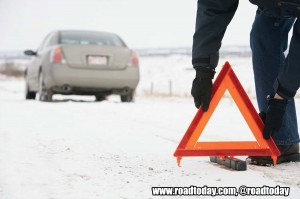 Canadians know that winter driving can be summed up in one word: Preparation. But what does being prepared include?
Canadians know that winter driving can be summed up in one word: Preparation. But what does being prepared include?
According to Lacey Elliott, car expert and spokesperson for autoTRADER.ca, aside from the requisite items such as a snowbrush and ice scraper, booster cables and road salt, motorists today should consider adding several other items to their vehicle emergency kit this winter.
“A regular emergency kit for summer may include staples such as a first aid kit,” she says. “But as weather conditions change dramatically in the winter, assembling a next-level kit is all part of being prepared.”
The Visibility Factor
Needing to pull over to the side of the road during the winter, especially during whiteout conditions, means making yourself as visible as possible. Elliott says this means that an absolute must-have in your winter emergency kit are road flares or high-visibility roadside triangles that will signal your distress to other drivers. “Many accidents occur as passers-by simply do not see your vehicle pulled over until it’s too late,” she says.
Portable Power
Cell phones are indispensable in an emergency, but if your phone battery is fading fast and your car battery is itself dead or dying and unable to charge it, your phone won’t be of much use. “A portable power pack that’s sold in many consumer electronic stores is a good idea to have in-hand,” Elliott says. “The ability to charge your phone, even without the aid of your car, is worth its weight in gold if you’re stuck roadside during the winter.”
The Blanket Solution
Elliott says an extra set of clothes— especially wool socks, gloves and a warm toque—in which to keep warm is also advisable, should you find yourself stuck in the cold waiting for help. If space is an issue, another option is to include an emergency blanket, which are thin and metallic—not unlike the ones used to keep marathon runners warm post-race. “They don’t take up much room in your trunk and might just save the day in frigid conditions.”
(NC)


